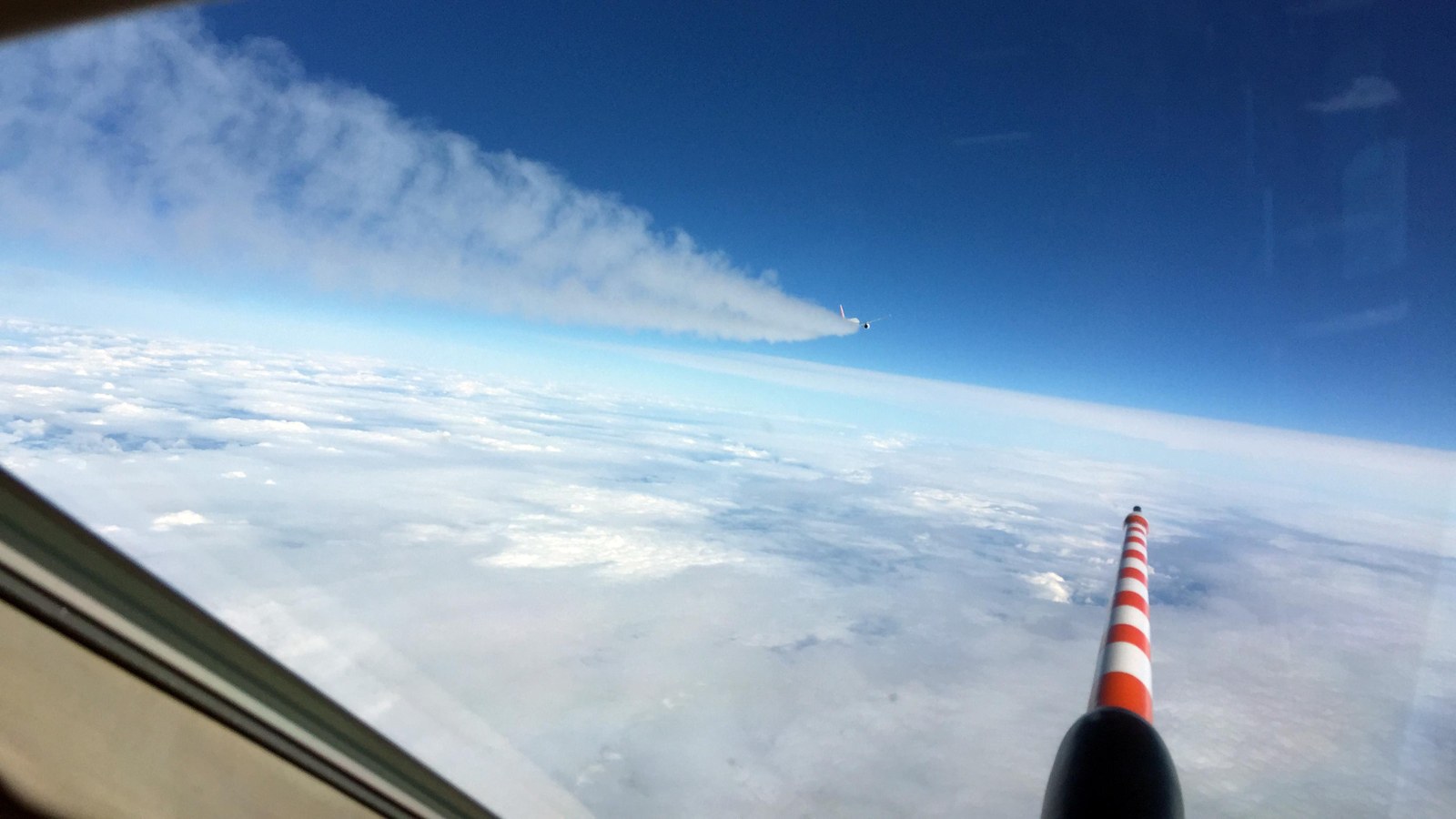One-third attributed to CO₂ emissions and two-thirds to non-CO₂ effects

Global air traffic accounts for around 3.5 percent of anthropogenic global warming to date. Researchers are analysing all of the areas in which the aviation industry has contributed to climate change since its inception, including carbon dioxide (CO2) and nitrogen oxide (NOx) emissions, and the effect of contrails and contrail cirrus clouds.
Their studies have shown that only a third of the climate impact of air traffic is due to carbon dioxide emissions. By 2018, global air transport had emitted roughly 32.6 billion tonnes of carbon dioxide. Around half of the total cumulative carbon dioxide emissions were generated in the last 20 years alone, largely due to colossal growth in commercial aviation, especially in Asia. As the greenhouse gas carbon dioxide remains in Earth's atmosphere for over 100 years, previous emissions from aviation continue to contribute towards global warming. Aviation is responsible for 32.6 billion tonnes of carbon dioxide – 1.5 percent of total anthropogenic carbon dioxide emissions to date.
High-impact contrail hotspots
The remaining two-thirds of the climate impact of aviation can be traced back to non-carbon-dioxide effects. Contrails and the resulting contrail cirrus clouds are the dominant factor here. Aircraft engines emit soot particles. These act as condensation nuclei for tiny, supercooled water droplets, which freeze instantly to form ice crystals and become visible as contrails in the sky. The ice crystals of contrails can survive for several hours in the damp, cold conditions at altitudes of 8–12 kilometres and form high clouds, known as contrail cirrus. These clouds may have a local warming or cooling effect, depending on the position of the Sun and the surface below. Numerous research studies have shown that a warming effect is more prevalent. The formation of these clouds varies hugely in time and space, so a relatively small number of contrails are responsible for the majority of warming.
Nitrogen oxide emissions from air traffic cause additional ozone and a range of other indirect effects on greenhouse gases. Emissions like water vapour, soot, aerosols and sulfate aerosols also have an impact on climate. If all of the non-carbon-dioxide effects are included in the calculations, air traffic can be considered responsible for 3.5 percent of global warming so far. Research geared towards climate-neutral aviation must take all of these factors into account.
